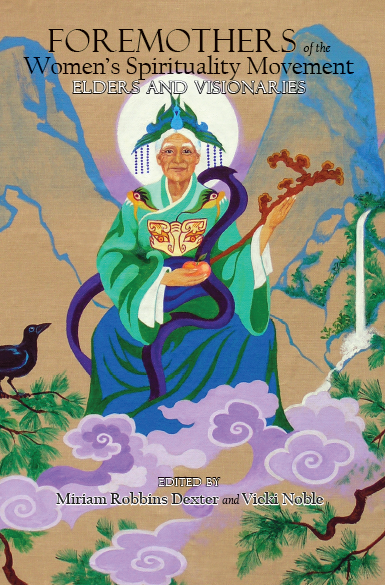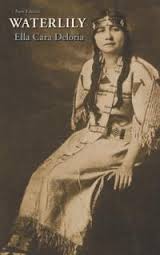 Cristina Biaggi, Ph.D., is a renowned Artist, Writer and Prehistorian. Her work has been widely exhibited in the U.S., Europe and Australia. She has published five books: Habitations of the Great Goddess, In the Footsteps of the Goddess, The Rule of Mars, Activism into Art into Activism into Art and Four Legs = Two, as well as a number of articles, which have appeared in various anthologies and other publications. The archaeologist and anthropologist Marija Gimbutas, who was her mentor and friend, wrote an introduction to her first book. Biaggi’s artistic practice consists of figurative sculptures, including a recent portrait of Jane Fonda, as well as political and abstract collages. She has also been commissioned to create numerous large outdoor sculptures. Her artwork is presently included in many collections including Jane Fonda’s in L.A. and Sean Scully’s in N.Y.
Cristina Biaggi, Ph.D., is a renowned Artist, Writer and Prehistorian. Her work has been widely exhibited in the U.S., Europe and Australia. She has published five books: Habitations of the Great Goddess, In the Footsteps of the Goddess, The Rule of Mars, Activism into Art into Activism into Art and Four Legs = Two, as well as a number of articles, which have appeared in various anthologies and other publications. The archaeologist and anthropologist Marija Gimbutas, who was her mentor and friend, wrote an introduction to her first book. Biaggi’s artistic practice consists of figurative sculptures, including a recent portrait of Jane Fonda, as well as political and abstract collages. She has also been commissioned to create numerous large outdoor sculptures. Her artwork is presently included in many collections including Jane Fonda’s in L.A. and Sean Scully’s in N.Y.
Mary: Welcome to People Who Make Books Happen, Cristina. How did you first become interested in the Great Goddess and Her habitations?
Cristina: My discovery of and interest in the Great Goddess first occurred when I was in my early twenties. I was raised Catholic, and I felt something was lacking in the traditional concept of divinity. I knew instinctively that there had to be something more than “God.” Even though as Catholics we had the Virgin Mary, she seemed too tied by the shackles of patriarchy to be a meaningful representative of female spirituality. When I read Joseph Campbell my interest in female divinity moved to a new level. Then later on I read about Marija Gimbutas’ discoveries and felt transported and on a quest to learn all I could about this numinous being whom I related to.
Mary: What was the most important thing you discovered in your research on habitations of the Goddess?
Cristina: The importance of negative space as a defining component of spiritual meaning.
Mary: How has this influenced your own work as an artist?
Cristina: I created a sculpture as a temple to be entered.

Mary: An edition of Habitations of The Great Goddess has recently been published in Italian. What special attraction do you think this edition will have for Italian readers?
Cristina: I believe Italian readers will appreciate the idea of architecture as sacred sculpture flowing with and into the landscape.
 Mary: I’m sure they will. Your work has a beautiful, rhythmic flow that is very evocative of the body of the Great Goddess. Thank you. It’s been a pleasure to talk to you today.
Mary: I’m sure they will. Your work has a beautiful, rhythmic flow that is very evocative of the body of the Great Goddess. Thank you. It’s been a pleasure to talk to you today.
Cristina: You’re welcome.
Cristina Biaggi’s Habitations of the Great Goddess is a comprehensive examination of the tombs, temples and artifacts dedicated to the female deity of prehistory – the Great Goddess, copiously illustrated with plates, drawings and photographs mostly taken by the author herself. Biaggi has concentrated on Malta and the Orkney and Shetland Islands which, even if far apart, seem to have an ideological connection. As Marija Gimbutas states, “No work before Biaggi’s has analyzed the findings within the context of a theacratic society worshiping a female Goddess as a main deity and provides solid evidence for the existence of the Goddess religion in Europe.” Riane Eisler has noted that, “her book verifies important links in the chain of evidence of Goddess worship from the Paleolithic over 20,000 years ago to early historic times.”

To purchase Le abitazioni della dea, Luciana Percovitch’s splendid Italian translation of Cristina Biaggi’s Habitations of the Great Goddess, click here.

 Marsh Hawk Press has just published a new collection of my poetry
Marsh Hawk Press has just published a new collection of my poetry  “
“ Charlotte: Mary, your new book,
Charlotte: Mary, your new book,  Mary: Writing The Village of Bones was very different from writing the other three books in the series, because I had to constantly keep the plots of the other books in mind. The story unfolds twelve years before the the opening of The Year the Horses Came, which means that I couldn’t contradict anything I had said about the past in The Year the Horses Came, The Horses at the Gate, and The Fires of Spring. This presented some real challenges.
Mary: Writing The Village of Bones was very different from writing the other three books in the series, because I had to constantly keep the plots of the other books in mind. The story unfolds twelve years before the the opening of The Year the Horses Came, which means that I couldn’t contradict anything I had said about the past in The Year the Horses Came, The Horses at the Gate, and The Fires of Spring. This presented some real challenges. Mary: We don’t have any written history from 6000 years ago, but we do have the research of archaeologists, paleontologists, archaeomythologists, and other scientists and scholars. I drew on their findings whenever possible, because I wanted my readers to feel confident that they were getting as accurate a picture of the daily life of the Goddess people as they could have without actually stepping into a time machine. Whether I am writing about Europe 6000 years ago or Imperial Russia under the Tsars, my goal is always as much factual accuracy as possible.
Mary: We don’t have any written history from 6000 years ago, but we do have the research of archaeologists, paleontologists, archaeomythologists, and other scientists and scholars. I drew on their findings whenever possible, because I wanted my readers to feel confident that they were getting as accurate a picture of the daily life of the Goddess people as they could have without actually stepping into a time machine. Whether I am writing about Europe 6000 years ago or Imperial Russia under the Tsars, my goal is always as much factual accuracy as possible.
 begins right after the end of The Village of Bones and relates Sabalah’s search for her lover, Marrah’s father. The second is a sequel to The Fires of Spring, which tells the story of Marrah’s return to her home in the hope of finding her mother Sabalah still alive after many years. Both novels are stories of love, quest, and reunion. My only challenge is to figure out which one to write first.
begins right after the end of The Village of Bones and relates Sabalah’s search for her lover, Marrah’s father. The second is a sequel to The Fires of Spring, which tells the story of Marrah’s return to her home in the hope of finding her mother Sabalah still alive after many years. Both novels are stories of love, quest, and reunion. My only challenge is to figure out which one to write first. Mary: I’ve gotten some excellent reviews, which is very important to the success of a novel. Many cite the same things that made the first three novels in the series popular with readers including praise for my historical research and pleasure in a vision of a peaceful society where children are cherished, men and women are equal, and people live in harmony with the earth. The reviewers have also said that The Village of Bones is lively and entertaining.
Mary: I’ve gotten some excellent reviews, which is very important to the success of a novel. Many cite the same things that made the first three novels in the series popular with readers including praise for my historical research and pleasure in a vision of a peaceful society where children are cherished, men and women are equal, and people live in harmony with the earth. The reviewers have also said that The Village of Bones is lively and entertaining.








 Your unconscious is packed with ideas, metaphors, visions, plots, dreams, colors, characters, emotions—in short, everything you need to write a great novel or collection of poems. But how do you get to it? How do you step out of the social agreement we call “reality,” and dip into this incredibly rich resource?
Your unconscious is packed with ideas, metaphors, visions, plots, dreams, colors, characters, emotions—in short, everything you need to write a great novel or collection of poems. But how do you get to it? How do you step out of the social agreement we call “reality,” and dip into this incredibly rich resource?  Mary: Welcome to
Mary: Welcome to Mary: Your new novel
Mary: Your new novel  For me, The Fifth Sacred Thing came directly out of the research I had been doing on the period you yourself write about in your
For me, The Fifth Sacred Thing came directly out of the research I had been doing on the period you yourself write about in your 

